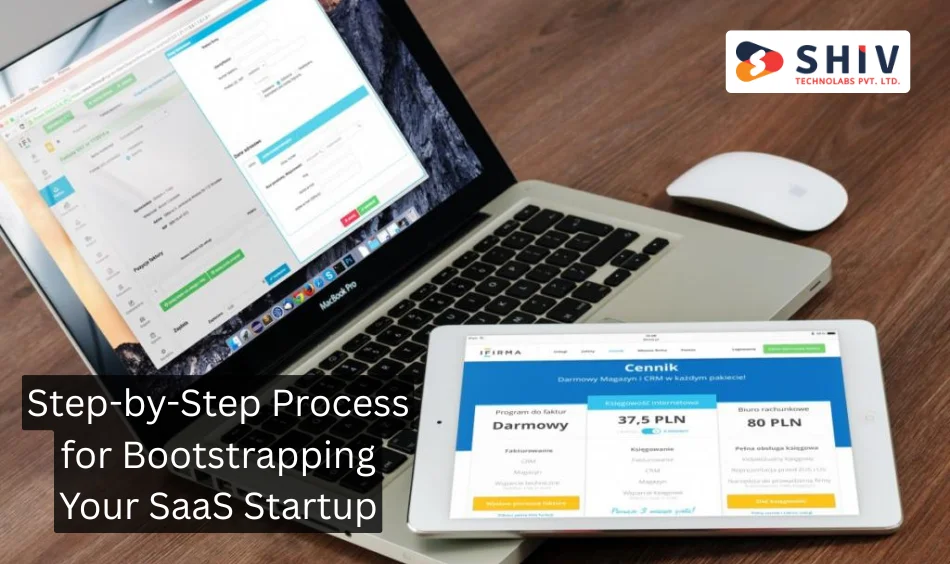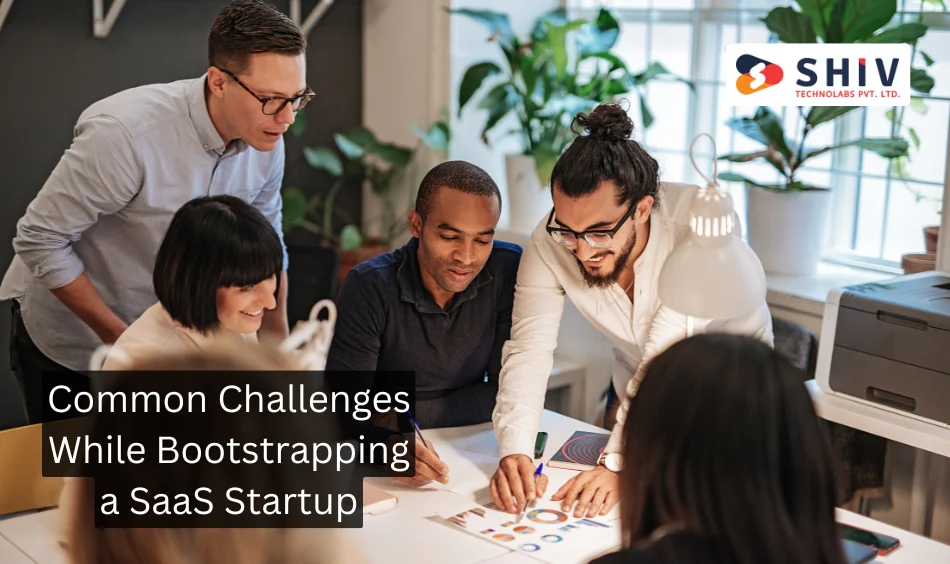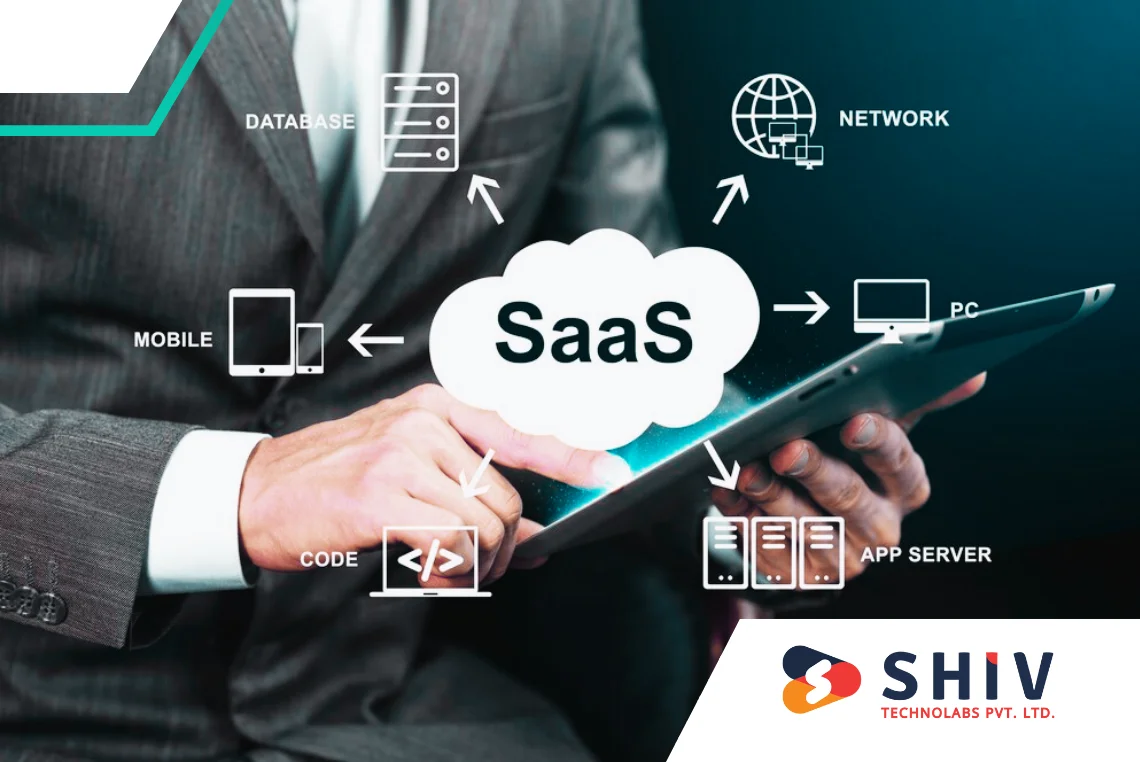Table of Contents
Starting a Saas business without funding is a challenging endeavour. But it is possible when you plan right. In 2025, many tech entrepreneurs are expected to opt for bootstrapping instead of seeking investors. Bootstrapping gives you complete control over your business. You can grow it your way.
The U.S. Small Business Administration reports that 64% of American small businesses start their operations with funds of less than $10,000. Your ability to start a business matches theirs because they have achieved it. The key elements you need are a proper mindset, together with well-defined steps.
In this guide, we’ll explain how to bootstrap a Saas startup in 2025. We will also show you how to build a Saas product from scratch and scale it effectively. Let us get started.
What Is Bootstrapping A SaaS Startup?
Building and expanding a tech startup through personal funding and internal assets is what bootstrapping means. You do not take outside investments at the start. You depend on early customer revenue to survive and grow.
The Saas business model is very popular among startups today. According to Statista, approximately 99% of Saas companies are small or medium-sized. Most of them started with bootstrapping.
When you bootstrap, you learn to manage every dollar carefully. You build stronger foundations because you know every decision matters.
Step-by-Step Process for Bootstrapping Your SaaS Startup

Here are seamless processes for Bootstrapping Your SaaS Startup idea:
Step 1: Validate Your SaaS Idea First
Before spending any money, ensure your idea addresses a genuine problem.
Talk to real people. Ask them if they would be willing to pay for your solution. Do not build anything before you confirm the demand.
You can create a simple landing page explaining your idea. Offer early access. If people sign up or show interest, you have a green light.
According to CB Insights, around 42% of startups fail because there is no market need. So, validation is the first and most crucial step.
Step 2: Build an MVP (Minimum Viable Product)
Once your idea is validated, build a basic version of your SaaS product.
Focus only on core features. Keep it simple. Do not waste time on fancy designs or extra tools.
Affordable Saas product development is crucial when bootstrapping. You need a product that works, not one that looks perfect at the start.
Utilising Saas development services for startups can save you both money and time. They know how to deliver a working product fast.
Step 3: Manage Costs Wisely
While bootstrapping, you must control every cost. Here are a few innovative ways to save money:
- Use open-source tools when possible
- Pick cloud platforms that offer free credits to startups
- Work from home or use co-working spaces
- Automate tasks instead of hiring too early
Reports show that cloud services like AWS, Google Cloud, and Azure offer up to $100,000 in free credits for startups. Use them smartly. Every dollar you save increases your runway, giving you more time to grow.
Step 4: Build a Small and Skilled Team
When you hire SaaS developers for a startup, be careful. You do not need a big team at first.
Hire only skilled individuals who can perform multiple tasks. Developers who can build, test, and maintain the product are very valuable at this stage.
Freelancers or contract developers are good options to start with. You can also partner with a company that offers SaaS development services for startups.
A study by Upwork reveals that 59% of businesses in the United States utilise freelance talent. It is a smart move for bootstrapped startups.
Step 5: Focus on Getting Paying Customers Fast
Revenue is the lifeline of a bootstrapped SaaS business.
Set transparent pricing from day one. Offer free trials but ask for payment after the trial ends. Focus on closing paying customers, not just getting users.
Email marketing, cold outreach, and personal demos are more effective at this stage than running expensive ads.
Getting your first 100 customers must be your top priority. They will provide you with feedback and compensation to help you move forward.
Step 6: Keep Improving Your Product
Listen to your customers. Improve your product based on their feedback.
Release minor updates often. Demonstrate to your customers that you value their experience.
Adding the right features will help you grow faster. Avoid adding everything that users suggest. Focus only on what helps solve the core problem better.
This way, your Saas product will remain both simple and powerful.
Step 7: Reinvest Profits Smartly
After generating income, you should direct it toward business expansion. Invest in assets that accelerate your business growth by obtaining superior servers and skilled developers, together with advanced marketing solutions.
Do not take a big salary for yourself too soon. Treat the business like a growing plant. It needs care and patience. Most bootstrapped SaaS founders reinvest 70% or more of their early profits into growth activities.
Here is a quick look at the steps:
| Step | Action | Goal |
|---|---|---|
| 1 | Validate your SaaS idea | Ensure real market demand |
| 2 | Build an MVP | Launch a simple working product |
| 3 | Manage costs wisely | Save money and extend runway |
| 4 | Build a small and skilled team | Work efficiently with limited budget |
| 5 | Focus on getting paying customers fast | Generate early revenue |
| 6 | Keep improving your product | Meet customer needs and grow |
| 7 | Reinvest profits smartly | Scale business step-by-step |
Common Challenges While Bootstrapping a SaaS Startup

Bootstrapping is rewarding but demanding. You may face some common problems like:
- Running out of money before reaching profitability
- Feeling stressed from doing too many tasks yourself
- Slow growth compared to funded competitors
You can overcome these challenges by planning more effectively and remaining patient. Keep your expenses low. Celebrate small wins. Stay focused on solving customer problems.
Remember, many large Saas companies, such as Mailchimp, started with bootstrapping and succeeded.
Why Bootstrapping is a Smart Move in 2025?
In 2025, securing funding will still be challenging for early-stage Saas startups. Investors will prefer startups that already have revenue.
Building a Saas business model for startups through bootstrapping demonstrates to investors that you are serious.
It demonstrates that your idea is effective in the real world. It also keeps you in control, so you can decide the future of your company without pressure.
Customers today respect companies that are independent and customer-focused. Bootstrapping helps you build that reputation from the start.
Conclusion
Bootstrapping your SaaS startup in 2025 will test your patience, skills, and creativity. But it will also give you complete freedom and pride in what you build.
The journey toward success requires proper support systems to make it easier. Working with the correct development partner allows you to avoid expenses and save time and mistakes.
The Saas development services from Shiv Technolabs stand out as the right choice for building a new Saas product. We offer affordable SaaS product development, expert teams, and complete support for startups.
Start your SaaS journey today. Build wisely. Grow with confidence. Your dream is one step away from reality.

























